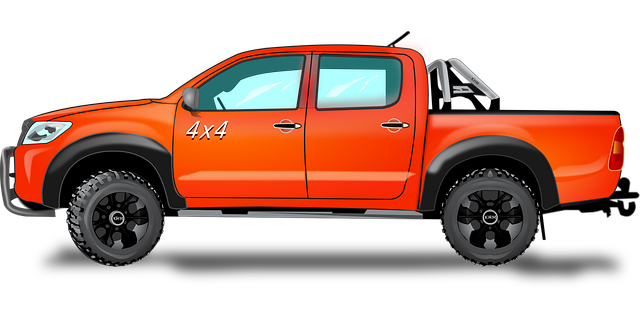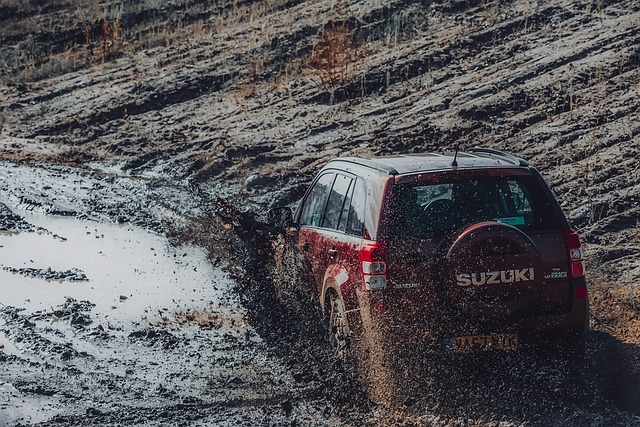RGV Wheels enhance RV performance, stability, and safety with robust aluminum/steel construction, advanced bearings, and sealed designs. Hitch balls, crucial for towing, offer diverse types catering to heavy-duty or general towing needs. Proper installation, safety checks, and regular maintenance ensure secure connections and longevity. RGV wheels provide durability, strength, enhanced ride quality, and fuel efficiency but come at a higher cost with specialized care requirements.
“Unleash the potential of your vehicle with an essential accessory—RGV wheels. This comprehensive guide delves into the world of hitch balls, offering a detailed understanding of their purpose and power. From the basics of RGV wheels to their diverse applications, this article illuminates how these innovative devices enhance towing capabilities. Explore types, installation tips, and safety considerations while uncovering the benefits they bring to your vehicular experience.”
- Understanding RGV Wheels: A Comprehensive Overview
- The Role of Hitch Balls in Vehicle Accessories
- Types and Applications of Hitch Balls
- Installation and Safety Guidelines for Hitch Balls
- Benefits and Considerations for Using RGV Wheels
Understanding RGV Wheels: A Comprehensive Overview

RGV (Recreational Vehicle) wheels are specifically designed to enhance the performance and stability of travel trailers, fifth wheels, and other types of RVs. These wheels are not your average automotive wheels; they are built to withstand the unique demands of recreational vehicle towing. RGV Wheels come in various sizes and designs, each tailored to accommodate different weight capacities and vehicle types. The primary focus of these wheels is to provide smooth rolling, better handling, and increased safety while driving with an RV.
One key feature of RGV Wheels is their robust construction, often incorporating high-quality materials like aluminum or steel. This ensures they can handle the additional weight and pressure exerted during towing. Additionally, they are equipped with specialized bearings and seals to reduce friction and protect against environmental elements, ensuring longevity and optimal performance over time. Understanding these wheels’ technical aspects is crucial for RV owners as it directly impacts the overall driving experience and the vehicle’s overall health.
The Role of Hitch Balls in Vehicle Accessories

Hitch balls are an essential component in the realm of vehicle accessories, particularly for those looking to enhance their RV experience. These sturdy attachments play a pivotal role in facilitating secure towing and hauling, making them indispensable for outdoor enthusiasts and RV owners alike. By seamlessly integrating with a vehicle’s hitch receiver, hitch balls enable the safe transport of various equipment, from bicycles and motorcycles to small trailers and watercraft.
The versatility of hitch balls is further underscored by their compatibility with RGV wheels, offering a seamless upgrade for those seeking enhanced maneuverability and control during travel. This integration streamlines the process of loading and unloading gear, ensuring a more efficient and enjoyable RV journey. In today’s digital era, where outdoor adventures are more popular than ever, hitch balls and RGV wheels serve as game-changers, revolutionizing how we explore and transport our beloved equipment.
Types and Applications of Hitch Balls

Hitch balls come in various types, each designed for specific applications. One prominent category is the RV (Recreational Vehicle) hitch ball, commonly used by travelers and outdoor enthusiasts to tow trailers, campers, or cars behind their RVs. These balls are engineered to withstand heavy loads and often feature a sturdy construction with high-quality materials like steel or aluminum.
Another type is the standard hitch ball, suitable for general-purpose towing needs. They are versatile and can be used with various towing vehicles, including trucks and SUVs. The size and capacity of these balls vary, catering to different towing requirements. RGV (Recreational Vehicle Group) wheels, a specialized variant, offer enhanced stability and maneuverability for RV owners, ensuring a smooth and secure connection when towing.
Installation and Safety Guidelines for Hitch Balls

Installation and safety should always be a top priority when fitting hitch balls, or RV wheels, to your vehicle. The process involves several key steps to ensure a secure connection and prevent any potential hazards during travel. First, ensure your vehicle’s towing capacity is adequate for the additional weight and distribution changes caused by the hitch ball. Next, choose a suitable hitch ball that matches your trailer’s weight rating and coupling style. Proper alignment of the hitch ball with the receiver on your vehicle is crucial; follow manufacturer guidelines to achieve this.
Once installed, always use the provided safety chains or cables to secure your trailer, preventing it from disconnecting in the event of a sudden stop or turn. Regularly inspect the hitch ball and its mounting hardware for any signs of wear or damage, replacing them as needed. Always refer to your vehicle’s owner manual and consult with a professional if you’re unsure about the installation process or safety measures for RV wheels.
Benefits and Considerations for Using RGV Wheels

RGV wheels, also known as recreational vehicle (RV) wheels, offer a range of benefits for those who frequently travel in their vehicles. One of the primary advantages is their durability and strength, designed to withstand the rigors of long-distance driving and diverse terrains. These wheels are built to enhance performance and provide a smoother ride, which is particularly important for extended trips where comfort becomes a key factor.
When considering RGV wheels, several practical aspects should be taken into account. They often feature advanced technology like improved traction patterns, ensuring better grip on various road surfaces. Additionally, their lightweight design can contribute to better fuel efficiency, a concern for many frequent travelers. However, the initial cost of these wheels might be higher compared to standard models, so budgeting is essential. Moreover, maintaining and servicing RGV wheels may require specialized knowledge, adding another layer of consideration for users.
RGV wheels, with their versatile applications, offer a seamless integration of functionality and safety. Hitch balls, as integral components of these wheels, play a crucial role in enabling secure towing and carrying capabilities for various vehicle accessories. By understanding the different types, installation processes, and associated benefits, users can maximize the potential of RGV wheels, ensuring a smooth and efficient experience in navigating diverse terrains and transportation needs.



